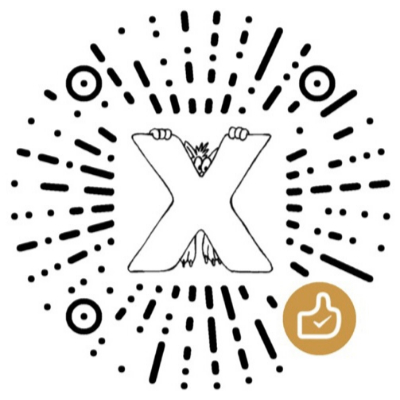Many of us yearn for a sincere and profound love, but finding that lasting and fitting relationship in reality is often not as simple as we imagined.
At the worst time of love, it may bring despair, loneliness, loss and even shame; but in the best moments, it can warm people's hearts and help us know ourselves more clearly and clarify what we really need in intimate relationships. No matter what the process is, as long as we grow in it, the ups and downs of this love roller coaster are worth it.
For the Mediator (INFP) personality type, love is not only an important part of life, but also a profound journey of self-growth and transformation. PsycTest Quiz official website (psychtest.cn) has specially prepared a 'Mediator's Healthy Love Guide' for everyone to help you sort out the complex emotions in love and go more steadily and farther.
This article focuses on mediators’ inner disorders in love, which often stem from their unique personality traits that sometimes prevent them from finding truly satisfying, lasting partnerships.
Three inner obstacles in love with the mediator (INFP)
INFP personality belongs to the introverted, intuitive, emotional, and perceptual types in MBTI. They are usually more restrained and cautious in the early stages of a relationship, but once they build trust, they will wholeheartedly give their partners care, support and encouragement.
However, even with affection and tolerance, mediators still have to face many psychological barriers from themselves, which often manifest as restrictive beliefs or behavioral patterns formed to protect themselves, hindering the establishment of deep emotions.
The following are three common internal problems in INFP love:
1. Inadequate self-acceptance and lack of self-love
The mediator is naturally strong in idealism, delicate emotions and good at empathy. Their tolerance and understanding of others often make people feel warm and tolerant. However, mediators often find it difficult to give themselves the same kindness and understanding.
According to our survey on personality and self-love, up to 84% of mediators are prone to focus on their own shortcomings, and this proportion is much higher than other personality types (61% overall). Meanwhile, only 26% of mediators treat themselves as kindly as they do to their close friends.
This mainly stems from the mediator's high standards and deep self-reflection on the ideal. They long to live out their inner values and dreams, but once they feel that they have not met the standards, they are prone to self-criticism and even fall into emotional lows. This situation is more obvious in particular for the 'turbulent mediator' (INFP-T).
What problems will lack of self-love bring in love? Simply put, a lack of healthy self-acceptance will weaken the mediator's self-confidence and self-esteem, making it difficult for them to set boundaries, and even compromise their needs in order to maintain a relationship and fall into an unbalanced emotional state.
Want to have a deeper understanding of how to improve self-love and get out of the inner dilemma of being single? Welcome to experience PsycTest Quiz's free MBTI personality test to help you better understand yourself.
2. Pleasant personality and oversacrificing oneself
INFP is extremely loyal and dedicated in love, always trying to make your partner feel love and support. Such quality should be a valuable asset in love, but when this kind of effort becomes a 'pleasure' that ignores one's needs, problems arise.
'Pleasant personality' refers to over-focusing on others' feelings and needs, while ignoring or even suppressing one's own true thoughts and emotions. Our survey shows that about 74% of mediators admit that they often sacrifice their own happiness to help others, and 88% hide their true emotions to avoid conflict.
Although the original intention is to maintain peace or make your lover happy, in the long run, this kind of depression will lead to poor communication between the two parties and a decrease in intimacy. The accumulated grievances and dissatisfactions will also become invisible killers of relationships.
This is also an important reason why PsycTest Quiz official website (psychtest.cn) emphasizes 'balanced efforts and self-care'. Knowing how to express real needs is the key to maintaining a healthy love.
3. Crisis of trust and overthinking
INFP's inner world is rich and active, and she likes to immerse herself in various thoughts and assumptions. This 'inner drama' makes them extremely insightful, but they are also prone to excessive speculation and concern about their partners.
For example, a partner’s untimely response to messages and an unintentional comment may cause the mediator to fall into a chain of negative associations such as “Are you unhappy?” and “Will there be any problems?”. According to our survey, 92% of mediators are prone to indulging in the “what if…” thinking, and 78% often fall into a negative thinking cycle.
If the facts are not given the due attention and only indulge in imaginary stories, this will seriously hinder the establishment of trust and the healthy development of emotions.
In addition, INFP's sensitivity to emotional memory also makes it difficult for them to completely let go of their past emotional baggage, and the shadow of old love often unconsciously affects the judgment of new relationships.
To break through this dilemma, in addition to self-awareness, you can also obtain more in-depth personality analysis and emotional guidance through PsycTest Quiz's MBTI Advanced Personality File to help you sort out your inner entanglements and live a more comfortable life.
Conclusion
Mediator INFP, like all personality types, will inevitably encounter inner struggles and obstacles on the road of love. Facing these internal problems calmly and actively adjusting them will not only allow you to have a deeper understanding of yourself, but also greatly increase the probability of finding an ideal partner and maintaining a stable relationship.
Have you ever 'destroyed' a relationship unconsciously? Welcome to share your experiences and confusions in the comment section. Let us explore together how to overcome obstacles in our hearts and move towards a more mature love.
Further reading
Want to have a more comprehensive understanding of MBTI personality and improve your self-cognition and interpersonal relationship abilities? You may wish to browse the following content:
At the same time, welcome to experience PsycTest Quiz's free MBTI personality test to start your journey of self-exploration. If you want to obtain deeper personal guidance, PsycTest Quiz also provides MBTI advanced personality profiles to help you fully grasp the connotation of sixteen personality types and meet personalized growth needs.
PsycTest Quiz official website (psychtest.cn) focuses on providing authoritative and scientific MBTI tests and interpretations to help you discover personality potential, improve interpersonal relationships, and move towards a happier life.
Link to this article: https://m.psyctest.cn/article/XJG61Qde/
If the original article is reprinted, please indicate the author and the source in the form of this link.

